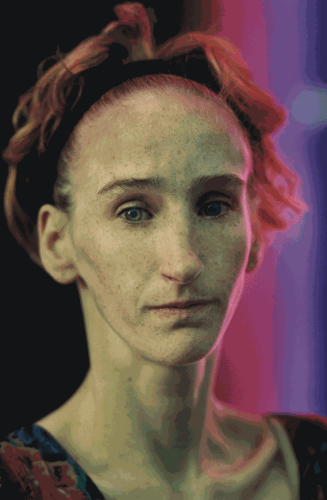Michael Hoppen Contemporary is pleased to present the very first European show of American photographer Robert Bergman’s color portraits, opening 14 October 2010. In the tradition of spontaneous street photography, Bergman finds fleeting moments with strangers, capturing the truth of personal emotion, lived experience and spiritual states, allowing a microscopically nuanced discovery of the indelible human condition that is unrivalled in the canon of photography.
Robert Bergman was influenced by photographer Robert Frank’s seminal black & white project ‘The Americans’. Crossing America from the early 1980s to present day with a 35mm camera, Bergman searches out his subjects, stopping people who catch his eye. Completely untouched, unstaged and unaltered, Bergman’s large-scale portraits comprise a contemporary spectrum of ages, ethnicities, professions, and life experience. The power of these images makes use of the idiom of painting as well as photography. They bring to mind Rembrandt’s late self-portraits, the most luminous of Renaissance and Old Master paintings, as well as having the intensity of Goya and van Gogh.
OCCASIONALLY THERE ARISES AN EVENT OR A MOMENT THAT ONE KNOWS IMMEDIATELY WILL FOREVER MARK A PLACE IN THE HISTORY OF ARTISTIC ENDEAVOR. ROBERT BERGMAN’S PORTRAITS REPRESENT SUCH A MOMENT, SUCH AN EVENT.
- TONI MORRISON
One of the salient aspects of Bergman’s work is that his subjects remain nameless. Each person’s story, even where they live, goes untold. The untitled works quietly challenge us to drop our preconceptions and to suspend our natural desire to access the facts and visual clues we use to place people in familiar categories.
Bergman has been patient about sharing his distinctive vision, though his commitment to the work has been unwavering. Finally, last year at the age of 65, he emerged onto the scene with nearly simultaneous solo exhibitions at P.S.1 Contemporary Art Center, an affiliate of the Museum of Modern Art, New York, and the prestigious National Gallery of Art in Washington, DC, which was the first-ever debut of an artist at the institution.

